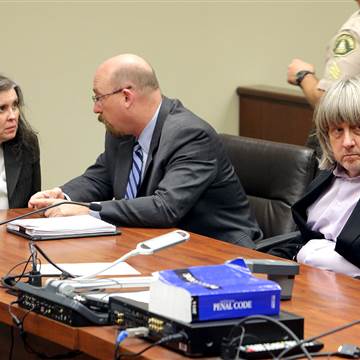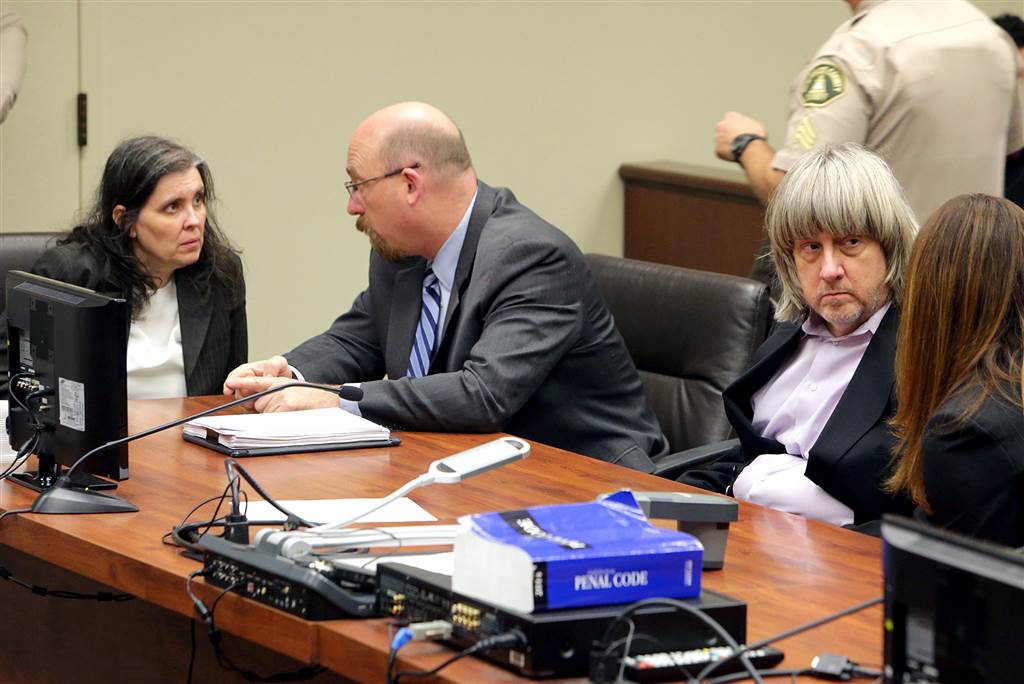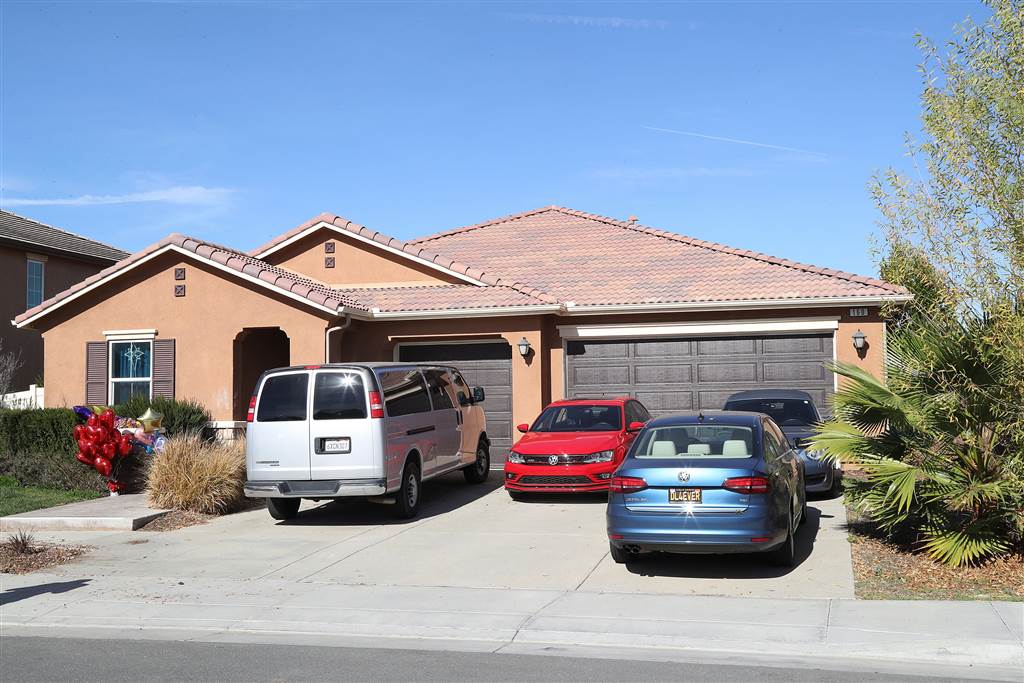
At Yellowstone National Park in Montana, George Nell, a maintenance ranger for the National Park Service’s North District, shovels snow from the entrance to the restrooms at the Mammoth campground. (Deby Dixon/For The Washington Post)
JOSHUA TREE NATIONAL PARK, Calif. — Jay Brown and Michelle Tukel picked a surreal weekend to visit sprawling Joshua Tree National Park. They arrived from Detroit to find the Southern California desert covered with a morning dusting of snow, and it was — briefly — colder than Michigan.
Stranger yet, the popular park was open but eerily devoid of staff.
Interested in learning about the trailheads, Brown, 61, found the doors to the visitor center locked. Brown approached a man wearing a beige uniform, thinking he was a park ranger, but the man turned out to be a Boy Scout supervisor who also was looking for information.
“I’m a little worried,” said Brown, the chief financial officer of an automotive manufacturing company. “I don’t want to go in and get lost in this freezing cold with nothing but my shoelaces. But apparently that’s what we’re going to do.”
He and his wife were among multitudes of Americans who visited the nation’s parks and monuments Saturday and confronted one of the confusing realities of the government shutdown — certainly the one that affected the public most on Day 1. Some national parks were open, but unsupervised. Several iconic parks and monuments were closed, including the Statue of Liberty in New York Harbor, the Liberty Bell in Philadelphia, presidential homes and other historical and cultural sites primarily made up of buildings that can be locked. Even some bathrooms were chained shut.
[Everything you need to know about the government shutdown]
 A sign indicates the closure of Independence Hall in Philadelphia on the first day of the federal government shutdown. (Mark Makela/Getty Images)
A sign indicates the closure of Independence Hall in Philadelphia on the first day of the federal government shutdown. (Mark Makela/Getty Images)
As with the chaotic hours before the shutdown, when even the nation’s federal agencies weren’t sure how to close or what to tell employees, the Trump administration’s decision to keep the national parks largely open presented people with confounding choices. The move, part of an effort to reduce the public-facing impact of a shutdown, left many asking themselves if they should enter the parks and risk their lives without the support of park rangers. And it left others upset that their plans to experience American treasures were thwarted.
[Massive confusion spreads through federal bureaucracy ahead of shutdown deadline]
“Good thing I didn’t have my heart set on seeing the Statue of Liberty,” said Catherine Crichlow, 29, of Cincinnati, a web developer who was visiting New York for the first time. Boat tours still operated around Liberty Island, but visitors had to admire Lady Liberty from a distance.
The National Parks Conservation Association estimated that approximately a third of the 417 National Park Service sites were completely closed Saturday. Other national parks — such as Joshua Tree and Yellowstone — remained semi-open.
“Keeping parks open with virtually no staff is a risky situation, and the guidance park staff is being given is vague at best,” said Theresa Pierno, the association’s president. “There is no substitute for National Park Service staff and their expertise, and it is not wise to put the public or our park resources at risk by allowing for half-measures to keep them open.”
The contradiction of an open park with no supervision left some Joshua Tree campers bewildered.
Paul Norconk woke up looking forward to taking his family to an educational ranger talk about roadrunners. Emerging from his camper on the scrublands dotted with the gnarled desert trees for which the park is known, he learned about the government shutdown that had arrived while the family was asleep.
“I guess we won’t be doing that,” said Norconk, a 59-year-old landscape architect.
Norconk, a Democrat who lives two hours from Joshua Tree in Monrovia, Calif., said he doesn’t blame his party’s representatives in Congress for refusing to give in on seeking protections for young undocumented immigrants brought into the country as children — known as “dreamers” — one of the barriers to a budget agreement.
“I’d like to see something get resolved equitably for people who come over and just want to make a living,” he said. “They deserve something better than deportation.”
Others in the park said they see more eye to eye with President Trump and the GOP, and don’t blame them for the shutdown, either.
“I’ll vote for whomever is going to tamper with the Bill of Rights the least,” said Ron Curl, a 47-year-old construction supervisor who was with a Boy Scout troop from Rancho Cucamonga, Calif.
Matthew Warner, an 18-year-old Eagle Scout with the troop, said that he, too, supports Trump and wasn’t worried about the park being unstaffed, given his proven survival skills.
“We’re usually on our own, so it’s nothing to worry about,” he said. “It’s preferred, probably.”
After two days of winter storms in Yellowstone, sun and blue sky peeked through the clouds Saturday as temperatures hovered at about 14 degrees. The trees were covered in snow on a pristine landscape.
At the North Entrance gate, near Gardiner, Mont., a sign explained the government shutdown. Visitors could enter the wilds of the park at their own risk. No passes or cash were needed.
The North Entrance Station of Yellowstone National Park, near Gardiner, Mont., sits closed at 7:45 a.m. Jan. 20, but a ranger is stationed inside. Later in the day, the ranger had departed, leaving behind a closure sign. (Deby Dixon/For The Washington Post)
George Nell, a maintenance ranger for the North District, shoveled the walks at the Mammoth campground bathroom. All visitor centers at the park were closed, and no flag was flying at the campground.
Nell said that the Park Service had gone back and forth about who would be deemed essential personnel during the shutdown, and the last he heard, visitor safety was essential.
“It is all about safety,” Nell said. “We can’t have people slipping on these sidewalks, or tripping over snowbanks.”
Ken Sinay, 64, owner of Yellowstone Safaris, drove by a car that had just run off the icy road in Lamar Valley. He said that the situation at the park was unusual in the first hours after the shutdown. His guests were “having a great time” experiencing Yellowstone, he said, “but there is a lot of talk about politics.”
Open parks helped some small-business owners who rely on tourism to fuel their income. Photography guide Michael Schertz, 57, from the Mount Rainier area of Washington state, said he was serving eight clients this week. He said it was a major risk to have a photography tour scheduled. He had been closely monitoring the votes before the shutdown, as a park closure would have cost him between $10,000 and $15,000.
“We were concerned because we were bringing in folks that had never been here before,” Schertz said. “We would have had to refund their money.”
Schertz said that he falls somewhere between being politically independent and Republican, and he does not blame the president for the shutdown. He was upset, however, at the House and Senate because he said he felt that they were not doing their jobs.
“They are so far removed from having to make a living, and they are not working for us and about doing what is right,” Schertz said. “It is just a power struggle, and we are caught in the middle.”

James Kristy and Ginger Lee, of Palm Beach County, Fla., walk the boardwalk at Yellowstone National Park’s Mammoth Hot Springs in Wyoming. Visitors could still ride snowmobiles and snow coaches into the park, despite the shutdown. (Matthew Brown/AP)
Down the road in picturesque Round Prairie, where the snow nuzzles the underbellies of the large bison bulls that call the area home, photography tour guide Jared Lloyd, 36, was tracking a bull moose on Soda Butte Creek.
One of Lloyd’s clients, Beth Goetzman, 56, of Houston, said that she was not happy with Washington politics.
“I think it is asinine,” she said. “I think those kids in Washington should play nice in the sandbox and get along.”
At Joshua Tree, Claudia Lowd was on the tail end of a road trip from Maine to California with her son, a musician who hopes to study music at the University of Southern California. His arsenal of guitars prevented them from flying.
Lowd was at the locked visitor center Saturday morning, an empty plastic jug in hand, wanting to ask someone where she could get a water refill.
“I blame them both,” said Lowd — an independent — of the Republicans and Democrats in Washington. “This is not our first time at the rodeo. They keep doing this.”
Dixon reported from Yellowstone National Park and Crandall reported from New York. Mark Berman and Juliet Eilperin in Washington contributed to this report.







